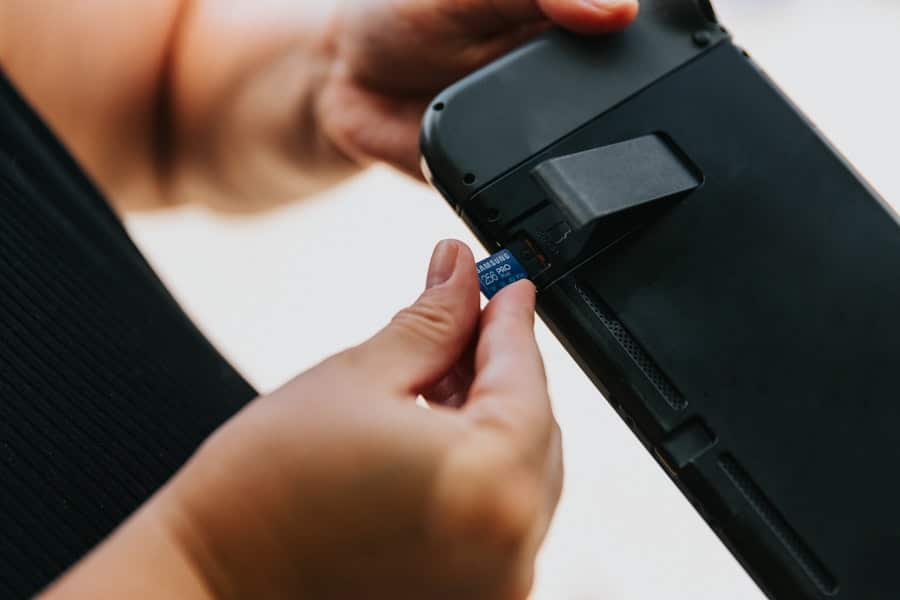Upgrading to a Solid State Drive (SSD) from a traditional Hard Disk Drive (HDD) can significantly enhance the performance of your laptop. One of the most notable advantages of SSDs is their speed. Unlike HDDs, which rely on spinning disks and mechanical read/write heads, SSDs use flash memory to store data.
This results in dramatically faster boot times, application launches, and file transfers. For instance, a laptop equipped with an SSD can boot up in a matter of seconds, while an HDD may take several minutes. This speed not only improves the overall user experience but also increases productivity, especially for users who rely on resource-intensive applications such as video editing software or virtual machines.
In addition to speed, SSDs are more reliable than their HDD counterparts. The absence of moving parts means that SSDs are less susceptible to physical damage from drops or bumps, making them ideal for portable devices like laptops. Furthermore, SSDs typically have a longer lifespan due to their durability and resistance to wear and tear.
This reliability is particularly important for users who store critical data on their devices, as the risk of data loss is significantly reduced. Additionally, SSDs consume less power than HDDs, which can lead to improved battery life for laptops. This is especially beneficial for users who frequently work on the go and need their devices to last throughout the day without needing a recharge.
Key Takeaways
- Upgrading to an SSD can significantly improve the speed and performance of your laptop, making it a worthwhile investment.
- When selecting the right SSD for your laptop, consider factors such as storage capacity, form factor, and interface compatibility.
- It is crucial to back up your data before upgrading to an SSD to prevent any potential loss of important files and documents.
- Disassembling your laptop to install the SSD requires careful handling and attention to detail to avoid damaging any components.
- Cloning your hard drive to the new SSD allows you to transfer all your data and settings seamlessly, ensuring a smooth transition to the upgraded storage device.
Selecting the Right SSD for Your Laptop
When it comes to selecting the right SSD for your laptop, several factors must be considered to ensure compatibility and optimal performance. First and foremost, you need to determine the form factor of your existing drive. Most laptops use either a 2.5-inch SATA SSD or an M.2 NVMe SSD.
The 2.5-inch SATA drives are more common and can easily replace traditional HDDs in many laptops. On the other hand, M.2 NVMe drives offer superior speed and performance but require a compatible M.2 slot on the motherboard. Checking your laptop’s specifications or consulting the manufacturer’s documentation can help you identify which type of SSD is suitable for your device.
Another critical aspect to consider is the storage capacity of the SSD.
Your choice should depend on your storage needs and usage patterns.
For users who primarily use their laptops for basic tasks such as web browsing and document editing, a 256GB or 512GB SSD may suffice. However, if you work with large files, such as high-resolution videos or extensive databases, opting for a larger capacity SSD—1TB or more—would be prudent. Additionally, it’s essential to consider the brand and warranty of the SSD.
Reputable brands often provide better reliability and customer support, which can be invaluable in case of any issues post-installation.
Backing Up Your Data Before Upgrading
Before embarking on the journey of upgrading your laptop’s storage, it is crucial to back up your data. This step cannot be overstated; data loss during hardware upgrades can occur due to unforeseen circumstances such as power failures or hardware malfunctions. A comprehensive backup ensures that all your important files, documents, and settings are preserved and can be restored if necessary.
There are several methods to back up your data, including using external hard drives, cloud storage services, or dedicated backup software. For those who prefer a physical backup solution, an external hard drive is an excellent choice. Simply connect the drive to your laptop and copy over essential files and folders.
Alternatively, cloud storage services like Google Drive, Dropbox, or OneDrive offer convenient options for backing up data online. These services not only provide ample storage space but also allow you to access your files from any device with internet connectivity. For users who want a more automated approach, backup software such as Acronis True Image or Macrium Reflect can create complete system images that include your operating system, applications, and personal files.
This method ensures that you have a full snapshot of your system before making any changes.
Disassembling Your Laptop to Install the SSD
Once you have backed up your data and selected the appropriate SSD for your laptop, the next step involves disassembling your device to install the new drive. This process can vary significantly depending on the make and model of your laptop; therefore, it is advisable to consult the manufacturer’s service manual or online guides specific to your device. Generally speaking, you will need a set of precision screwdrivers and possibly some plastic prying tools to safely open the laptop casing without damaging any components.
Begin by powering down your laptop completely and disconnecting it from any power source. It’s also wise to remove the battery if it is detachable. After ensuring that all power sources are disconnected, locate the screws that secure the back panel of your laptop.
Carefully remove these screws and gently pry open the back panel using a plastic tool to avoid scratching or damaging the casing. Once inside, identify the existing hard drive; it is usually housed in a dedicated bay secured by additional screws or brackets. Take care when handling internal components; grounding yourself by touching a metal surface can help prevent static electricity from damaging sensitive parts.
Cloning Your Hard Drive to the New SSD
Before physically installing the new SSD into your laptop, it is often beneficial to clone your existing hard drive onto the new drive. Cloning creates an exact replica of your current system, including the operating system, applications, settings, and files, allowing for a seamless transition without needing to reinstall everything manually. To accomplish this task effectively, you will need cloning software such as EaseUS Todo Backup or Clonezilla.
To begin the cloning process, connect your new SSD to your laptop using a USB-to-SATA adapter if it’s a 2.5-inch drive or an M.2 enclosure for NVMe drives. Launch the cloning software and select your existing hard drive as the source disk and the new SSD as the destination disk. Follow the prompts provided by the software to initiate the cloning process; this may take some time depending on the amount of data being transferred.
Once completed, you will have an exact copy of your old drive on your new SSD, ready for installation.
Installing the SSD and Reassembling Your Laptop
Removing the Cloned SSD and Insertion
Begin by carefully removing the cloned SSD from its enclosure or adapter if applicable. Insert it into the designated slot or bay where your old hard drive was located.
Securing the SSD
If you are installing a 2.5-inch SATA SSD, ensure that it is securely connected to the SATA connector and fastened with screws if required. For M.2 NVMe drives, align them with the M.2 slot at an angle before gently pressing down until they click into place.
Carefully replace the back panel and secure it with screws that were removed earlier during disassembly. Ensure that all screws are tightened appropriately but avoid overtightening them as this could damage the casing or internal components. Once reassembled, reconnect any peripherals and power on your laptop to verify that everything is functioning correctly.
Configuring Your Laptop to Utilize the SSD
Upon successfully installing your new SSD and powering on your laptop, you may need to configure your system settings to ensure optimal performance from your new drive. The first step is to enter the BIOS/UEFI settings during boot-up by pressing a designated key (often F2 or Delete) as indicated on-screen during startup. Within these settings, check that your new SSD is recognized by the system; if it is not listed, double-check connections and ensure that it is properly seated in its slot.
Once confirmed in BIOS/UEFI, you may need to adjust boot priorities if you cloned your old drive onto the new SSD. Set the new SSD as the primary boot device so that your laptop will load from it instead of any remaining HDDs or other drives present in the system. After saving these changes and exiting BIOS/UEFI, allow your laptop to boot normally into Windows or whichever operating system you are using.
Enjoying the Improved Performance of Your Upgraded Laptop
With everything set up correctly and your laptop now running on an SSD, you can expect a noticeable improvement in performance across various tasks. The most immediate change will likely be in boot times; many users report booting into their operating systems in under 20 seconds with an SSD compared to several minutes with an HDD. Applications will launch almost instantaneously, allowing for a more fluid workflow without frustrating delays.
Moreover, file transfers will be significantly faster; moving large files or folders will take mere seconds rather than minutes as experienced with traditional hard drives. This enhanced speed not only improves day-to-day usability but also allows users to multitask more effectively without experiencing lag or slowdowns during intensive operations such as gaming or video editing. Overall, upgrading to an SSD transforms an aging laptop into a revitalized machine capable of handling modern computing demands with ease and efficiency.
If you’re looking to upgrade your old laptop with an SSD, you may also be interested in discovering the best AI video generator software available today. This article explores the possibilities of using artificial intelligence to create engaging video content. By unlocking the potential of AI technology, you can take your video production to the next level and enhance your creative projects.
FAQs
What is an SSD?
An SSD (Solid State Drive) is a storage device that uses flash memory to store data, unlike traditional hard disk drives (HDD) which use spinning disks.
Why should I upgrade my old laptop with an SSD?
Upgrading your old laptop with an SSD can significantly improve its performance, speed up boot times, and reduce loading times for applications and files.
What are the benefits of upgrading to an SSD?
Some benefits of upgrading to an SSD include faster boot times, improved overall system performance, reduced power consumption, and increased durability and reliability compared to traditional HDDs.
Can I upgrade any old laptop with an SSD?
In most cases, you can upgrade any old laptop with an SSD as long as it has a compatible interface (SATA or M.2) and physical space for the SSD.
What do I need to upgrade my old laptop with an SSD?
To upgrade your old laptop with an SSD, you will need an SSD that is compatible with your laptop’s interface, a screwdriver to open the laptop, and cloning software to transfer your existing data to the new SSD.
How do I upgrade my old laptop with an SSD?
To upgrade your old laptop with an SSD, you will need to open the laptop, remove the existing HDD, install the new SSD, and then transfer your data from the old drive to the new SSD using cloning software.
Can I upgrade my old laptop with an SSD myself?
Yes, you can upgrade your old laptop with an SSD yourself as long as you are comfortable opening up your laptop and following the necessary steps for installation.
Will upgrading to an SSD void my laptop’s warranty?
In most cases, upgrading to an SSD will not void your laptop’s warranty, but it’s always best to check with the manufacturer or read the warranty terms and conditions to be sure.



